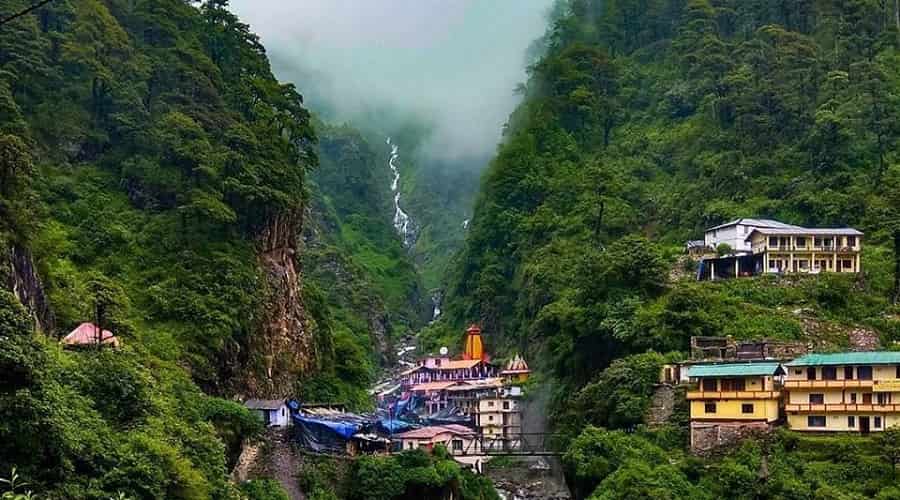
Exploring the Chardham Places: A Journey Through Spirituality and Nature
The Chardham Yatra, consisting of four sacred sites—Yamunotri, Gangotri, Kedarnath, and Badrinath—is one of the most revered pilgrimages in India. Each of these destinations is steeped in mythological significance, natural beauty, and an ambiance that invites devotees and travelers alike. In this blog, we will delve deep into each of these sites, exploring their importance, the journey involved, and what makes the Chardham experience unforgettable.
1. Yamunotri: The Origin of the Yamuna River
Yamunotri is the westernmost of the Chardham pilgrimage sites, nestled in the Garhwal Himalayas. It is the source of the Yamuna River, one of the most important rivers in Hindu mythology. The trek to Yamunotri involves a beautiful journey through lush forests, gurgling streams, and towering mountains.
The Journey to Yamunotri
The journey typically begins at Hanuman Chatti, which is accessible by road. From here, devotees can either trek approximately 5 kilometers or hire a pony or palanquin to reach the Yamunotri Temple. The temple itself is dedicated to Goddess Yamuna and is surrounded by the enchanting beauty of the Himalayas.
At Yamunotri, the Surya Kund, a hot spring, is a must-visit. Devotees place rice and other offerings in the hot water to get them cooked as a form of ritual offering. The experience of visiting Yamunotri is a blend of spirituality and nature, making it a significant start to the Chardham pilgrimage.

2. Gangotri: The Source of the Ganges
Next on the Chardham circuit is Gangotri, the origin of the Ganges River, which is considered the most sacred river in India. The Gangotri Temple, dedicated to Goddess Ganga, attracts countless pilgrims each year, especially during the auspicious months of April to June and September to October.
The Journey to Gangotri
To reach Gangotri, one must travel from Haridwar or Rishikesh to Uttarkashi and then continue further by road. The picturesque landscapes along the way make this journey incredibly rewarding.
Upon reaching Gangotri, visitors are greeted by the sight of the majestic Bhagirathi Peak. The temple is located at an altitude of about 3,042 meters, and the cool, crisp air adds to the spiritual ambiance. Pilgrims often perform rituals at the banks of the Ganges, believed to wash away sins and purify the soul.
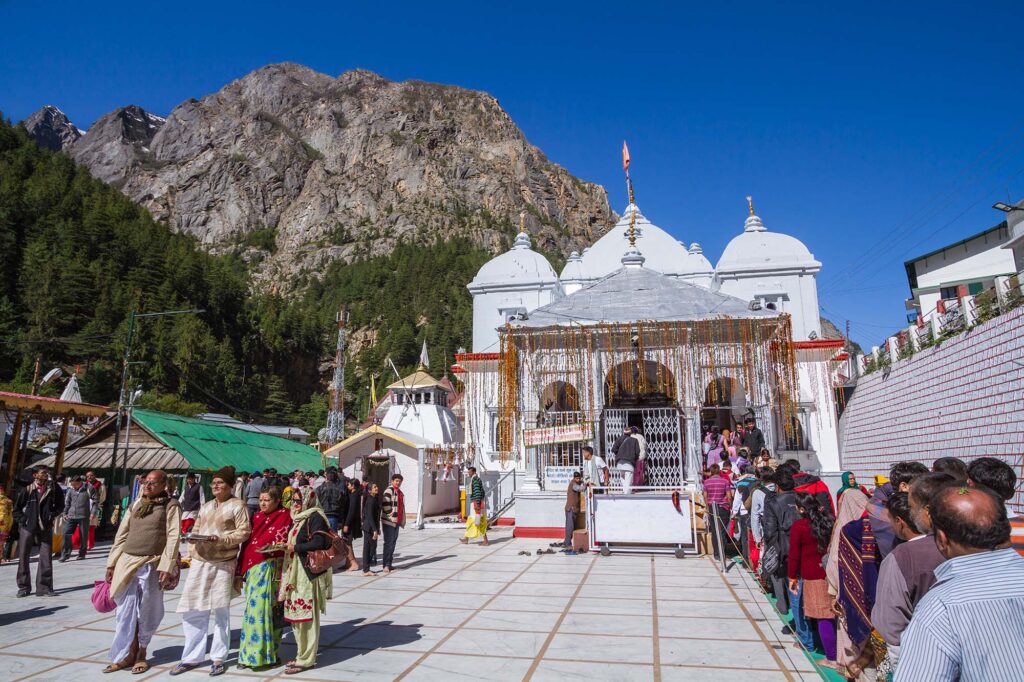
3. Kedarnath: The Abode of Lord Shiva
Kedarnath, situated at a height of 3,583 meters, is home to one of the twelve Jyotirlingas of Lord Shiva. It is the third site in the Chardham pilgrimage. The Kedarnath Temple is not just a significant religious site; it is also an architectural marvel set against the backdrop of the stunning Kedarnath Mountain.
The Journey to Kedarnath
The trek to Kedarnath begins from Gaurikund, where pilgrims must hike approximately 16 kilometers to reach the temple. The path is adorned with the beauty of nature, from sprawling meadows to glistening streams, making the arduous journey worthwhile.
The temple is open from late April to early November, attracting thousands of devotees during this period. Kedarnath is known for its serene atmosphere, and the spiritual energy felt here is profound. Devotees come here to seek blessings and offer their prayers to Lord Shiva, making it an essential stop on the Chardham circuit.

4. Badrinath: The Sanctuary of Lord Vishnu
The final destination of the Chardham Yatra is Badrinath, dedicated to Lord Vishnu. It is situated at an elevation of 3,133 meters and is surrounded by the breathtaking Narasimha Parvat and Neelkanth Peak. The Badrinath Temple is one of the most important Vaishnavite temples in India.
The Journey to Badrinath
Travelers can reach Badrinath via Joshimath, which is the nearest town connected by road. The drive to Badrinath is filled with picturesque views of the mountains and valleys, offering an enchanting experience.
The temple is open for worship from May to October, during which it witnesses a large influx of devotees. The Badrinath experience includes not just spiritual rituals but also the chance to take a dip in the Tapt Kund, a hot spring near the temple, which is believed to have medicinal properties.

The Spiritual Significance of Chardham
The Chardham Yatra is more than just a pilgrimage; it is a journey of self-discovery and spiritual awakening. Each site offers a unique experience, deeply rooted in Hindu mythology. Pilgrims believe that visiting the Chardham can lead to moksha (liberation from the cycle of life and death) and a profound sense of peace.
Festivals and Celebrations
The Chardham sites also host various festivals throughout the year. For instance, the Maha Shivaratri festival at Kedarnath and the Badri Kedar Utsav in Badrinath are events filled with devotion and vibrant cultural displays. These festivals attract visitors from across the country, further enriching the Chardham experience.
Tips for Travelers
- Plan Your Journey: Given the remote locations of these sites, it’s advisable to plan your journey well in advance. Ensure that you check the weather conditions and temple opening dates.
- Physical Preparedness: The treks to Yamunotri and Kedarnath can be challenging, so being physically fit and acclimatized to high altitudes is crucial.
- Pack Smart: Carry essential items like warm clothing, trekking gear, water, and snacks. Also, include spiritual items like prayer beads or holy texts.
- Respect Local Customs: Being respectful of local customs and traditions is essential when visiting these sacred sites.
- Stay Hydrated and Nourished: The altitude can cause fatigue, so staying hydrated and well-nourished is important during the pilgrimage.
5. The Legends Behind Chardham
Each of the Chardham sites has its own unique mythological tales that enrich their spiritual significance. Understanding these legends can deepen your experience as you visit each sacred place.
Yamunotri Legends
According to Hindu mythology, Yamunotri is associated with the goddess Yamuna, who is believed to be the daughter of the sun god, Surya, and sister to Yama, the god of death. The river is said to have taken form as a means of providing solace and purification to those who seek her blessings.
One famous legend states that Yamuna visited Yamunotri to save her brother Yama from the demon Kumbhkarna. To protect him, she prayed to Lord Krishna, who then vanquished the demon. This connection between the river and familial bonds emphasizes the nurturing aspect of the goddess, attracting devotees who seek her blessings for familial harmony and longevity.

Gangotri Myths
The legends of Gangotri are equally captivating. The river Ganges is personified as Ganga, the daughter of the heavens, who descended to Earth to cleanse the sins of humanity. The epic story is chronicled in the ancient texts, where Bhagirath, a king, undertakes a rigorous penance to bring Ganga to Earth.
In response to his devotion, Ganga agrees to descend, but her powerful current threatens to destroy the Earth. To mitigate this, Lord Shiva catches her in his matted locks, releasing her gently onto the Earth at Gangotri. This sacred site is where Bhagirath performed his prayers for the salvation of his ancestors, and the moment remains a focal point for devotees seeking spiritual cleansing.
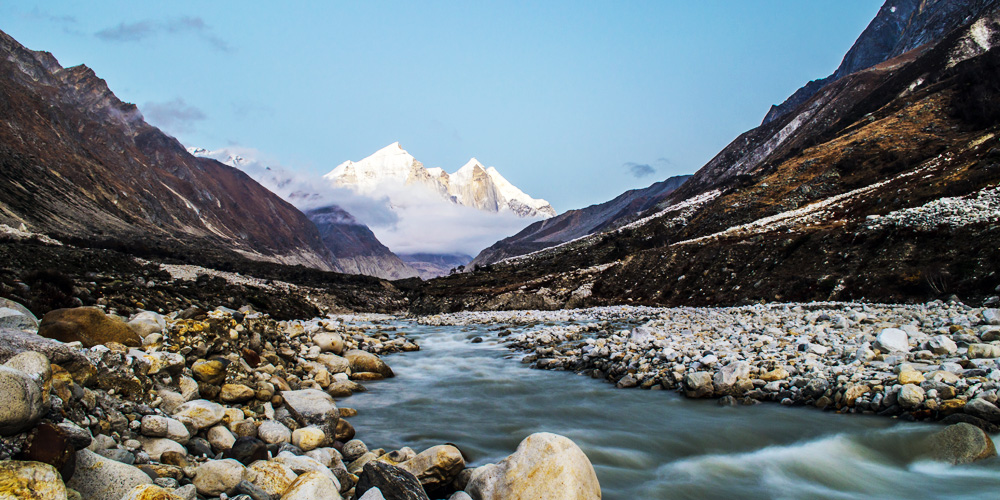
Kedarnath Tales
The Kedarnath Temple is intricately linked to the story of the Pandavas, the heroes of the Mahabharata. After the Kurukshetra war, the Pandavas sought redemption for the sins incurred during the battle. They traveled to the Himalayas to seek the blessings of Lord Shiva.
According to the legend, Shiva disguised himself as a bull to avoid the Pandavas. However, Bhima, one of the Pandavas, managed to catch him by grabbing the bull’s hindquarters, which sank into the ground. The bull’s body re-emerged at different places, with the Kedarnath temple marking the location of its head. This legend further emphasizes Kedarnath’s importance as a place of penance and forgiveness.
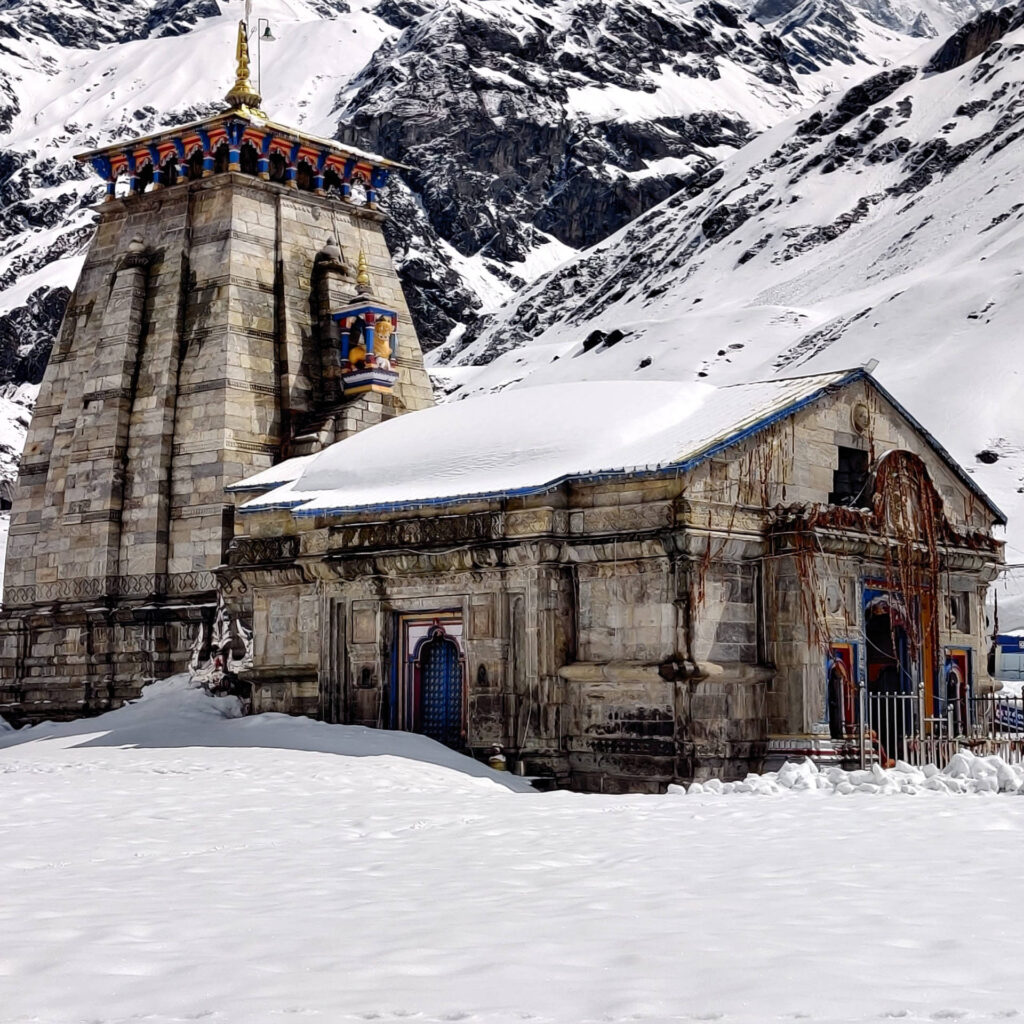
Badrinath Stories
In the case of Badrinath, the temple is dedicated to Lord Vishnu, who is believed to have meditated in the region for centuries. The Badrinath Temple is situated in a region that was once covered with badri (wild berries), giving the place its name.
The Nara-Narayana mountain range is said to be the abode of Nara and Narayana, incarnations of Vishnu. The temple’s legends highlight the significance of devotion, emphasizing the power of meditation and prayer in attaining spiritual elevation. The annual Badri Kedar Utsav, which showcases local culture and devotion, further brings this legend to life.

6. The Natural Beauty of Chardham
The allure of the Chardham pilgrimage is not limited to its spiritual significance; the natural beauty surrounding each site is equally breathtaking. The pristine landscapes, snow-capped peaks, and lush valleys create a mesmerizing backdrop for the journey.
Yamunotri: The Scenic Trail
The trek to Yamunotri offers mesmerizing views of the surrounding mountains and dense forests. The diverse flora and fauna along the route add to the natural charm of this sacred site. As you make your way to the temple, the fresh mountain air invigorates your spirit, and the sound of the Yamuna River flowing alongside serves as a soothing soundtrack.
The Yamunotri Glacier, from where the river originates, is a stunning sight that can be approached with some effort. The beauty of the glacier, with its icy blue waters, serves as a reminder of nature’s grandeur.

Gangotri: A Photographer’s Paradise
As you arrive at Gangotri, the beauty of the Bhagirathi River complements the snow-capped peaks surrounding the temple. The serene environment is perfect for reflection and photography, capturing the essence of the Himalayas. The Gangotri National Park, home to several species of wildlife, including the elusive snow leopard, is an essential part of the ecosystem in this region.
The tranquility of the area allows for meditation and spiritual practice, making it a perfect retreat for those seeking peace away from the chaos of modern life.

Kedarnath: The Majestic Mountains
The journey to Kedarnath unfolds amidst breathtaking vistas of the Himalayas. The Kedarnath Temple, standing strong against the backdrop of the towering Kedarnath Peak, offers an awe-inspiring sight that fills visitors with reverence. The valley’s natural beauty, dotted with wildflowers and lush greenery, is a testament to nature’s resilience.
In addition, the Mandakini River, which flows beside the temple, adds to the picturesque setting, with its crystal-clear waters reflecting the surrounding mountains.
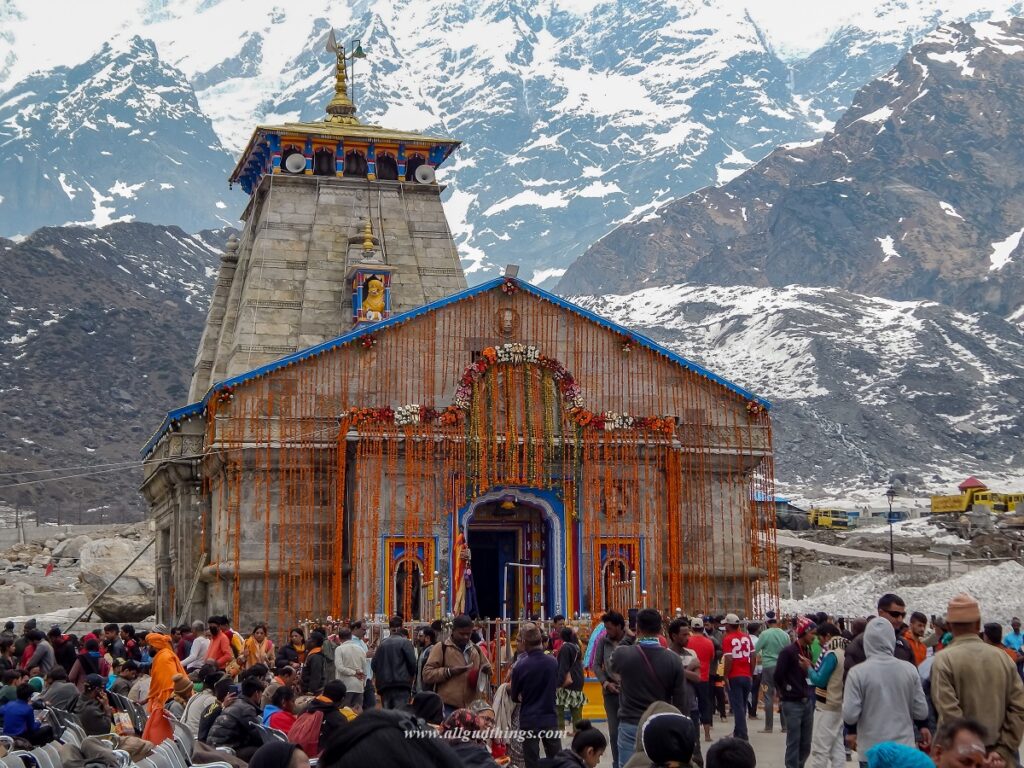
Badrinath: A Spiritual Oasis
Badrinath is equally stunning, with the Neelkanth Peak rising majestically in the background. The contrasting colors of the temple’s architecture against the natural surroundings create a striking visual effect. The Alaknanda River flowing nearby enhances the spiritual atmosphere, and the area is dotted with hot springs, believed to have medicinal properties.

7. The Cultural Experience of Chardham
Beyond the spiritual aspect, the Chardham pilgrimage offers a rich cultural experience. The local communities, predominantly composed of Gharwal people, have preserved their traditions, language, and customs over centuries.
Festivals and Local Traditions
The various festivals celebrated at the Chardham sites add vibrancy to the pilgrimage. For instance, Badrinath hosts the Makar Sankranti festival, during which the idol of Lord Vishnu is taken on a procession, attracting thousands of devotees. Similarly, the Kedarnath festival showcases traditional music, dance, and rituals that highlight the region’s cultural heritage.
Local Cuisine
Traveling through these sacred sites also offers a chance to indulge in local delicacies. Traditional Garhwali cuisine includes dishes like Aloo Ke Gutke, Phaanu, and Kafuli, which are not only delicious but also provide insight into the local culture. The hospitality of the local people makes the experience even more enriching.
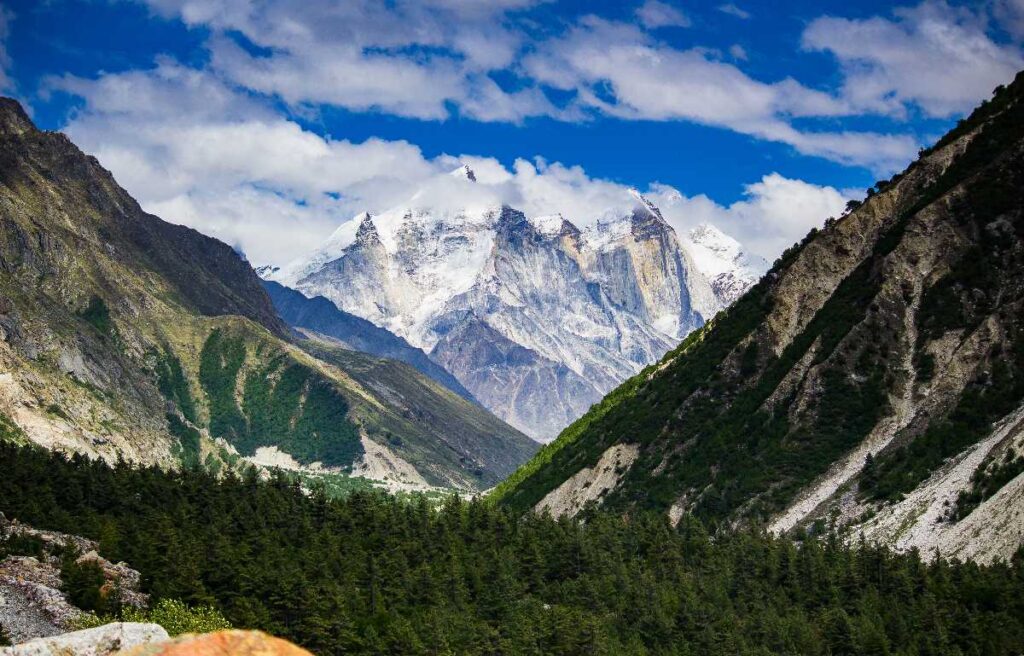
8. The Spiritual Benefits of Chardham
Embarking on the Chardham pilgrimage is said to bestow numerous spiritual benefits. Devotees believe that visiting these sacred sites leads to the purification of the soul and helps in achieving spiritual enlightenment.
Seeking Forgiveness and Redemption
As emphasized in the stories surrounding each site, many pilgrims seek forgiveness for past sins. The journey is often accompanied by heartfelt prayers and rituals aimed at seeking redemption. The spiritual ambiance and natural beauty of the locations provide a perfect setting for introspection and self-discovery.
Community and Connection
The Chardham Yatra is also about the sense of community it fosters among pilgrims. Sharing this spiritual journey with fellow devotees creates bonds and a shared sense of purpose. Many travelers report feeling a deep connection with the people they meet along the way, further enriching their experience.
9. Preparing for the Chardham Yatra
Embarking on the Chardham pilgrimage is not just about spiritual intentions; it requires careful planning and preparation to ensure a safe and fulfilling journey. The rugged terrains, high altitudes, and varying weather conditions mean that travelers need to equip themselves adequately for the adventure. Here are some essential tips to help you prepare for the Chardham Yatra.
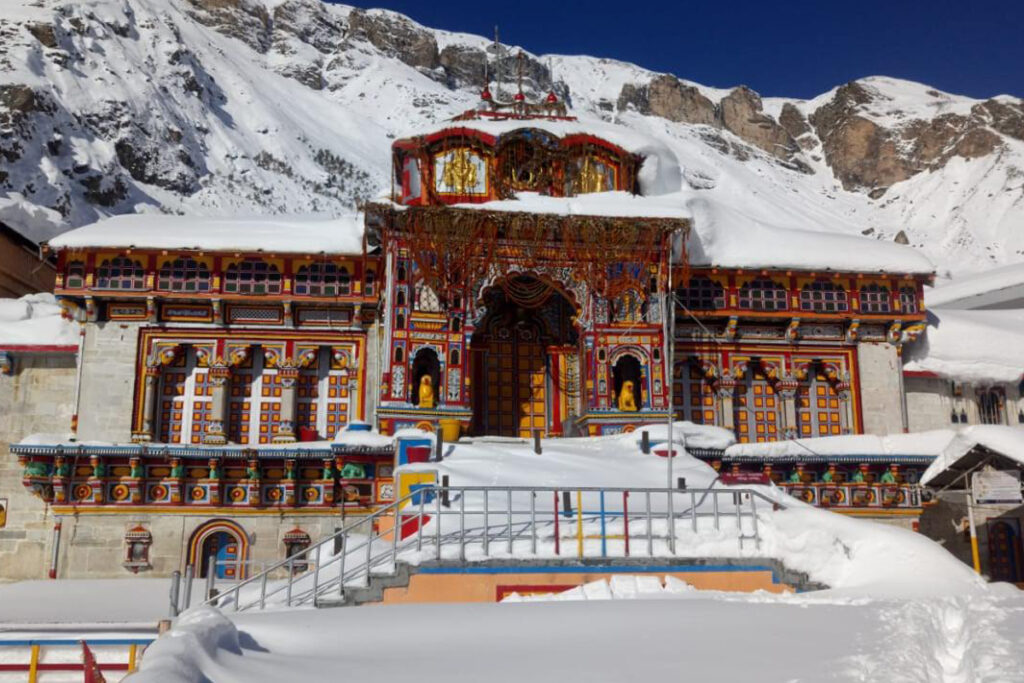
Physical Fitness and Acclimatization
One of the critical aspects of preparing for the Chardham pilgrimage is physical fitness. The treks to sites like Yamunotri and Kedarnath can be challenging, with steep ascents and rugged paths. Regular exercise, including cardiovascular workouts and strength training, can help build the stamina needed for the hikes.
Acclimatization is crucial as well, especially for those not accustomed to high altitudes. It is advisable to spend a day or two in towns like Uttarkashi or Joshimath to allow your body to adjust to the elevation before heading to Gangotri or Badrinath.
Packing Essentials
Packing the right gear is essential for comfort and safety during the Chardham Yatra. Here’s a list of items to include:
- Clothing: Layering is key due to the unpredictable weather. Pack thermal innerwear, a waterproof jacket, warm sweaters, and comfortable trekking shoes. Additionally, consider carrying a shawl or a warm cap, as temperatures can drop significantly, especially at night.
- First Aid Kit: A basic first aid kit should include medications for altitude sickness, pain relief, antiseptics, and any personal medications you may need.
- Food and Water: While there are numerous eateries along the way, carrying energy snacks like nuts, dried fruits, and protein bars is beneficial. A reusable water bottle equipped with a filter or purification tablets is also essential for staying hydrated.
- Safety Gear: Trekking poles can provide stability on steep paths. A headlamp or flashlight is also useful, particularly when navigating trails in low light.
- Spiritual Items: Consider bringing personal spiritual items like a prayer book, beads, or any offerings you wish to make at the temples.

Travel Arrangements
Planning your travel itinerary in advance can make your Chardham experience smoother. Given the remote locations of these pilgrimage sites, arrange your transportation beforehand, especially during the peak season from April to June and September to October.
Local transportation options include buses, taxis, and shared cabs. Make sure to check the condition of the roads, as landslides and heavy rains can affect travel schedules. Booking accommodations ahead of time is also advisable, as places can get crowded during the pilgrimage season.
10. Understanding the Spiritual Significance of Chardham
The Chardham pilgrimage is deeply rooted in Hindu beliefs, with each site representing different aspects of spirituality and devotion. Understanding these significances can enhance your journey and deepen your connection to the divine.
Yamunotri: Purification and Family Bonds
Visiting Yamunotri is associated with the purification of the soul and the strengthening of familial ties. Devotees often visit this site to seek blessings for their families, particularly for the health and longevity of their loved ones. Rituals conducted here are believed to wash away sins and foster harmony within families.
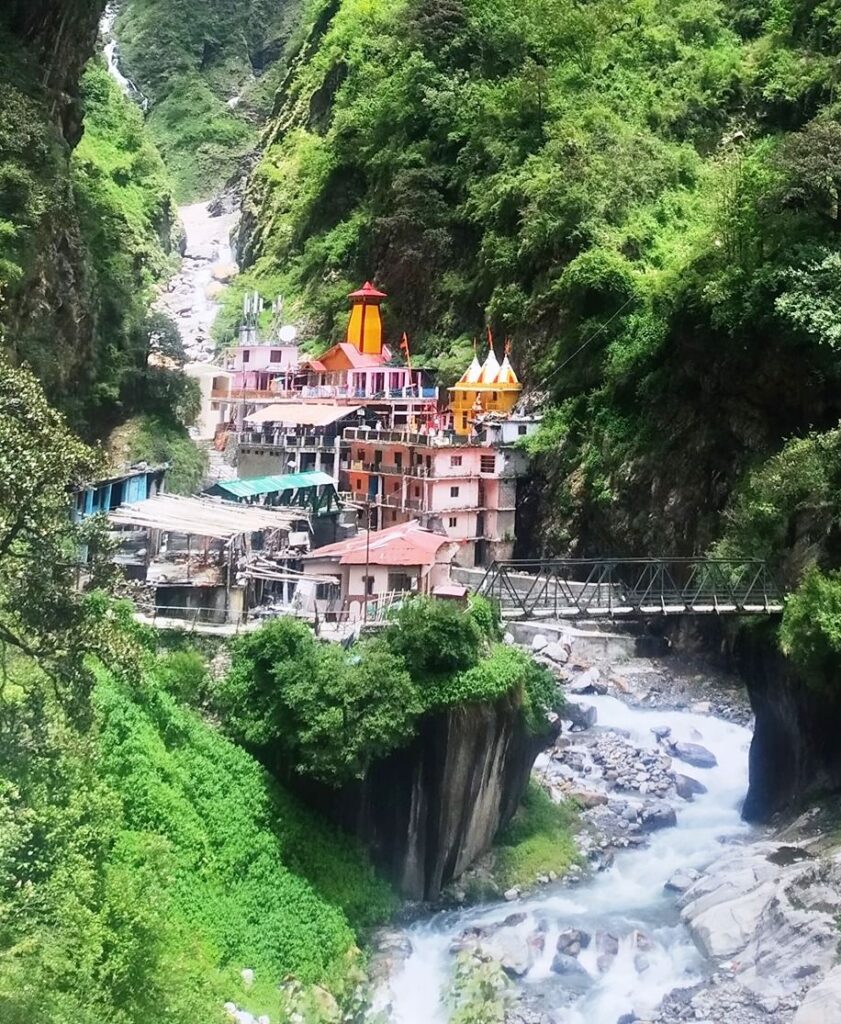
Gangotri: The Cleansing Power of the Ganges
The waters of the Gangas hold immense spiritual value in Hinduism. A dip in the river at Gangotri is considered a powerful act of purification, washing away sins and granting spiritual merit. Pilgrims often collect water from the river to take back to their homes, using it for rituals and blessings.
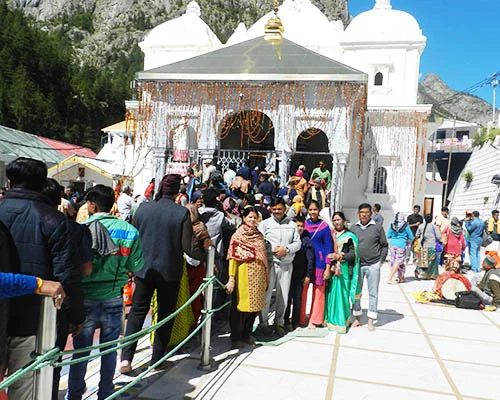
Kedarnath: Redemption and Forgiveness
The significance of Kedarnath is closely tied to themes of redemption and forgiveness. Many devotees embark on this journey seeking forgiveness for their past actions and sins. The ambiance of the temple, with its towering peaks and serene atmosphere, offers a sense of solace and introspection.
Pilgrims often recount personal transformations after visiting Kedarnath, sharing experiences of newfound clarity and peace. The act of seeking forgiveness and connecting with Lord Shiva can profoundly impact one’s life.

Badrinath: Divine Blessings and Spiritual Enlightenment
Badrinath represents the quest for divine blessings and spiritual enlightenment. The temple’s location amidst the majestic mountains symbolizes the ascent towards higher consciousness. The rituals performed here are aimed at invoking divine grace and guidance in one’s spiritual journey.
The annual rituals, including the opening and closing ceremonies of the temple, attract large crowds, symbolizing the cyclical nature of devotion and faith. The reverence shown by pilgrims reflects a deep commitment to their spiritual paths.
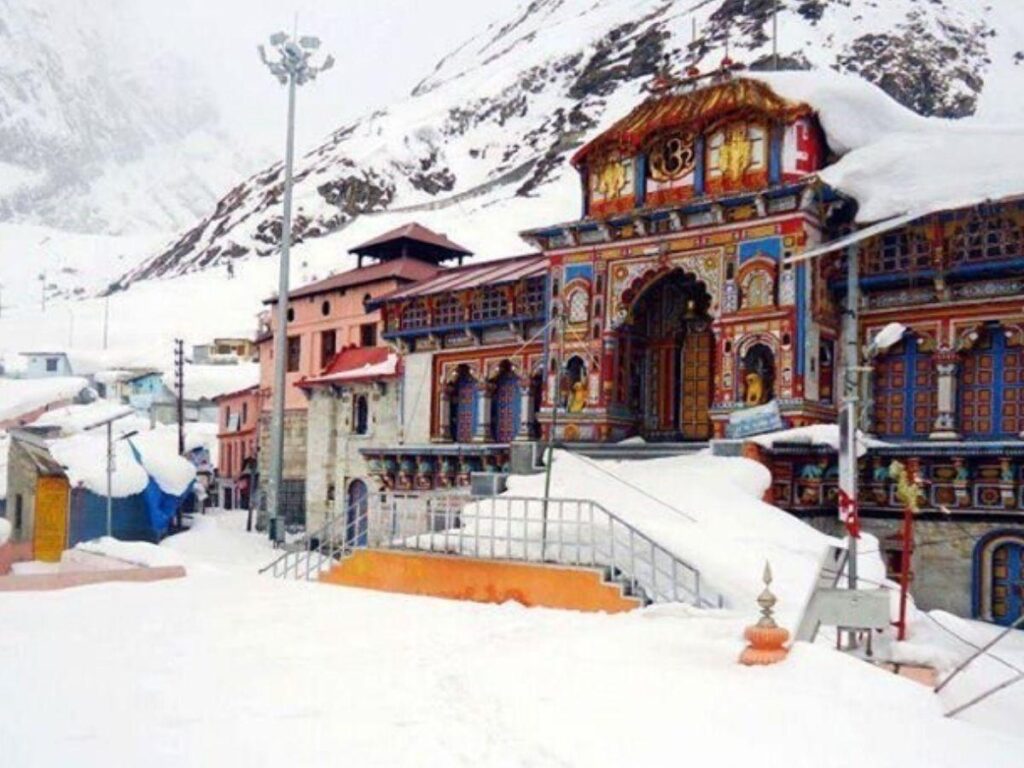
11. Connecting with Nature During Chardham Yatra
Beyond its spiritual significance, the Chardham Yatra offers a unique opportunity to connect with nature. The breathtaking landscapes, diverse wildlife, and serene environments create a harmonious backdrop for introspection and meditation.
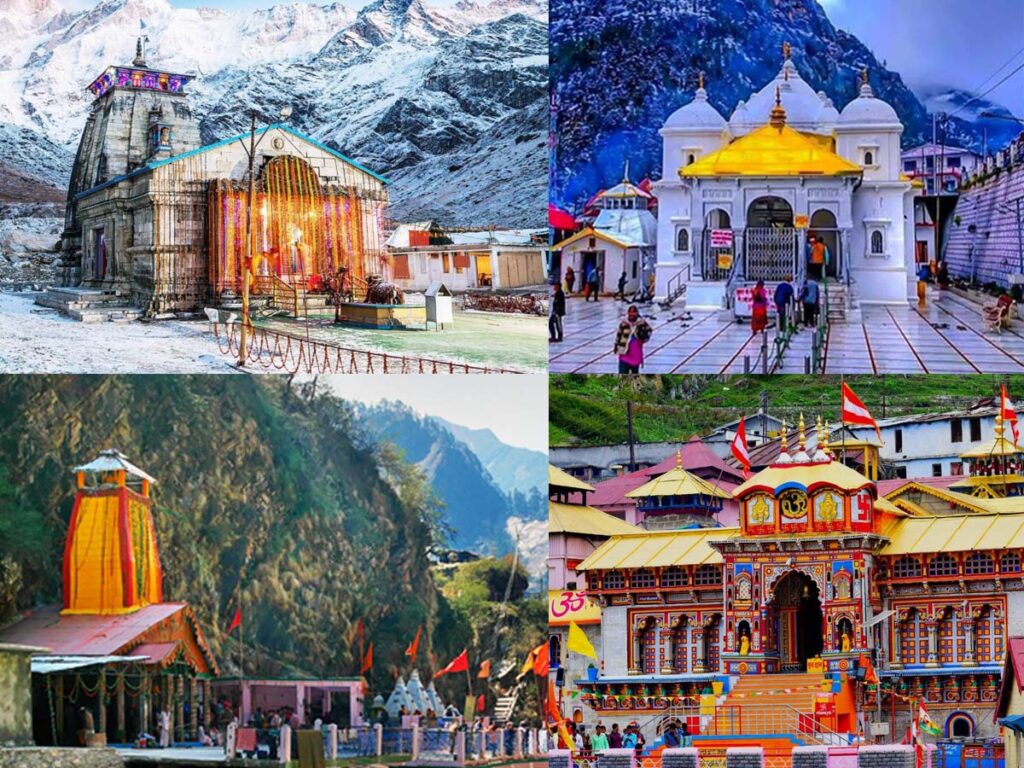
Biodiversity and Conservation
The Chardham region is home to a rich diversity of flora and fauna, with several areas designated as national parks and wildlife sanctuaries. The Gangotri National Park, for instance, is known for its unique ecosystem, which includes endangered species like the Himalayan Black Bear and the Snow Leopard.
Devotees and travelers alike are encouraged to respect the environment and engage in conservation efforts. Simple acts like minimizing waste, avoiding littering, and respecting local wildlife can contribute significantly to preserving the natural beauty of the region.
Spiritual Retreats in Nature
The tranquility of the Chardham sites offers a perfect setting for spiritual retreats and meditation. Many pilgrims take time to meditate by the riversides, surrounded by the towering peaks and the sound of flowing water. The natural environment enhances the meditative experience, allowing for deeper reflection and connection to the divine.
Nature walks and hikes along the trails leading to each site can also be spiritually uplifting. As you walk through the serene landscapes, take moments to appreciate the beauty around you, fostering a sense of gratitude and connection to the universe.

12. The Role of Community in Chardham
The Chardham pilgrimage is not just a personal journey; it fosters a sense of community among devotees. Sharing the experience with fellow travelers creates bonds that transcend cultural and geographical differences.
Pilgrimage as a Collective Experience
During the Chardham Yatra, pilgrims often travel in groups or join local communities, sharing stories, prayers, and rituals. This collective experience enhances the spiritual atmosphere, fostering a sense of unity and shared purpose.
Local communities play a significant role in supporting the pilgrimage, providing hospitality and guidance to travelers. Engaging with local residents can offer deeper insights into the cultural significance of the sites and the traditions practiced in the region.
Volunteer Opportunities
Many organizations and temples encourage volunteers to assist in maintaining the cleanliness and upkeep of the pilgrimage routes and sites. Participating in these efforts can provide a sense of fulfillment and connection to the community, allowing pilgrims to give back to the places that hold deep spiritual significance.

Conclusion: The Transformative Experience of Chardham
The Chardham Yatra is not merely a journey to sacred sites; it is a transformative experience that fosters a connection with nature and spirituality. The serene landscapes, the ancient temples, and the rituals carried out at each site create an environment that is both invigorating and calming.
Whether you are seeking spiritual enlightenment, a break from the hustle of daily life, or simply a chance to connect with nature, the Chardham pilgrimage promises an experience that resonates long after the journey ends. Each visit to Yamunotri, Gangotri, Kedarnath, and Badrinath reinforces the significance of faith and the beauty of the natural world.
Embarking on this journey will undoubtedly leave you with cherished memories and a profound sense of peace that only the Chardham can provide. So, prepare for an adventure that combines spirituality, nature, and a deep connection to Indian culture. The Chardham awaits your v








Leave a Reply